Home generators are more popular than ever before.
A generator is used to provide emergency home electricity when the power goes out. A generator can be a useful tool if you live in an area where seasonal storms bring down power lines or if your main source of power is prone to failure. Home generators come in all shapes and sizes, with prices ranging from a few hundred dollars for small models that can run on gas or diesel for several hours up to thousands of dollars and higher for bigger, longer-lasting models that run on natural gas or liquid propane. You should choose a generator based on how much electrical capacity you need at different times during an outage, how long you think an outage will last before grid-supplied electricity returns and your budget. Generators are classified by the amount of electricity they can produce over a period of time, measured in watts (or kilowatts). Smaller generators fall in the range of 400 kW to 5 kW and can run on gasoline or propane
What Is the Smallest Portable Generator?
As a general rule, the lightest portable generators are in the 400 kW to 5 kW range. Some of these small generators can run on gasoline or propane. Some can run on natural gas. Generators in the 3 to 5 kW range are ideal for most households and small businesses. These models can power essential appliances such as refrigerators, freezers, televisions and computers. They can also run power tools used for home improvement jobs. However, they cannot handle all household appliances at once or larger items like air conditioners that use a lot of electricity.
Newer generators in this category typically come with inverters that convert DC power from the generator to AC power you can connect directly into your home’s electrical system through a transfer switch. ” The main advantage is you don’t have to install a separate distribution panel on-site,” says Hanks. “It basically allows you to tap into the home grid so if there’s ever an outage, you can run the generator automatically and have access to things like lighting, refrigeration and some very basic appliances.”
The Top 5 Small Portable Generators
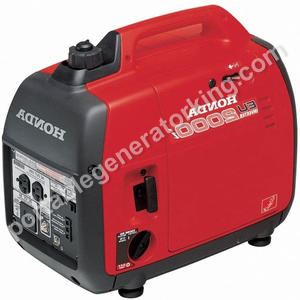
Small and lightweight, Honda’s EU2000i delivers the perfect combination of power, performance, and all-around reliability—all in a compact package fit for use anywhere. With Honda engineering at the core of its proven dependability, our innovative MY GENERATOR app is sure to provide you with that extra peace of mind you need from your generator. With Bluetooth capability built right in, new CO-MINDER spot checks every 30 seconds and will shut it down before saturation levels reach dangerous heights while on standby or running modes! The EU2000i can support up to 10 hours of power while sipping less than a gallon of gas per hour and weighing just under 40 pounds, Honda’s new generator is truly the ultimate in portable quiet power.
And for those who demand nothing short of the best, Honda engineers have taken noise level reduction to a whole new level! A high level of sound insulation is provided by the double walled enclosure and air-cooling system. This helps to protect your hearing, making it easier than ever to work with Honda’s new generator for hours on end!
If you want quiet, portable power, this is the generator for you!
| Wattage | Product Dimensions | Output Wattage |
| 2200 watts | 21 x 12.24 x 19.72 inches; 54 Pounds | 2200 Watts |
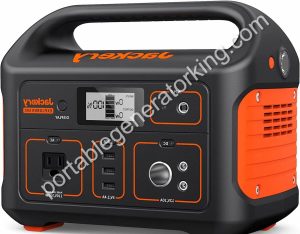
The Jackery Solar Generator 1000 has been designed as an easy-to-use power source. With a high capacity and impressive endurance, this portable generator is perfect for powering all your home needs outside or at your campsite – with 3 pure sine wave AC outlets, 2 USB-C ports, and 1 Quick Charge 3.0 port you’ll never need to worry about overwhelming the generator’s capability again!
With smart features like overcharge protection & full battery indication it can even keep itself safe from accidental damage after being used continuously for hours each day – just imagine how many times that would be if you own two Jackery solar panels (sold separately). Lock in our offer today and upgrade to endless solar power!
| Wattage | Product Dimensions | Voltage | Output Wattage |
| 1002 watts | 13.1 x 9.2 x 11.1 inches; 22.04 Pounds | 110 Volts | 1000 Watts |
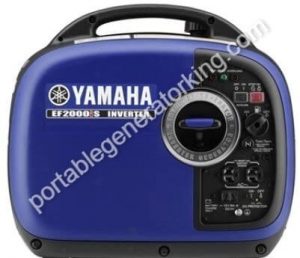
The Yamaha EF2000iSV2 is a “heavy-duty” generator that can generate enough power to meet everyday needs. Rated at 1600 watt AC output and 2000 watts maximum, this generator provides enough power for any situation and all but eliminates sound pollution. You won’t have to worry about disturbing your neighbors with this one!
This generator is also environmentally friendly, meeting California Air Resource Board (CARB) certification standards. It runs on unleaded gasoline and features a low-oil shutoff function to prevent damage.
It comes with an automatic idle control feature that helps users save money while running the unit. This generator has enough power for most household or recreational needs.
| Wattage | Product Dimensions | Output Wattage |
| 1600 watts | 19.3 x 11 x 17.9 inches; 44.1 Pounds | 2200 Watts |
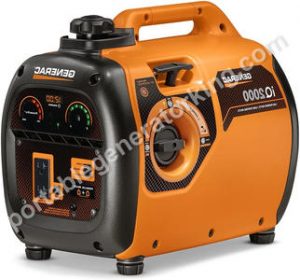
Power your appliances with the Generac 6866 iQ2000 generator. It’s only 2000 watts of AC power and it can run for up to 7 hours on just a single tank, so there’s no need to worry about running out of juice. Do you know that power goes off all the time? No worries! With this little guy, you’ll be set for life!
Product description: The Generac line has always been known as a reliable battery backup system – now they come in a smaller package at the same high levels of quality. Designed for people who don’t want an electrician all over their house, this is perfect when you are looking to keep the lights on during blackouts since it runs without being plugged into water and gas.
It is the best choice for people looking to buy a reliable backup generator that doesn’t cost an arm and a leg. Oh, did I mention it comes with a full 3-year warranty from the manufacturer? Not bad! The only con I can think of is that it can be louder than most generators on this list. But honestly, you can’t expect anything less from this cheaper alternative!
| Wattage | Product Dimensions | Voltage |
| 1600 watts | 20 x 12.6 x 16.9 inches; 46.2 Pounds | 120 Volts |
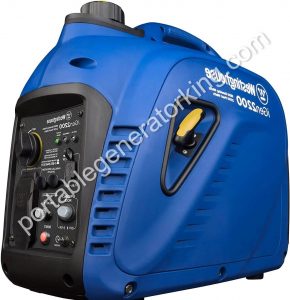
We’re excited about the Westinghouse iGen2200 for a couple of reasons. First, in addition to being an outage-saving emergency backup power source, the iGen2200 can run your home essentials too. But most importantly, it’s incredibly quiet and fuel-efficient- less than 52 decibels and up to 12 hours on 1.2 gallons of gas! The iGen2200 features Economy Mode for maximum fuel efficiency; parallel capability by combining more than one unit with other available wattage models like our WH2200iXLT; and plenty of outlets in two 20 amp 120V outlets (or five 15 amp 110V) plus two USB ports–one are perfect dorm room presentation gifts or stocking stuffers this holiday season!
| Wattage | Product Dimensions | Voltage |
| 2200 watts | 19.8 x 11.4 x 17.9 inches; 46 Pounds | 120 Volts |
Frequently Asked Questions
Conclusion
Generators can be great for those who need electricity during power outages, but they are very limited in their range. For example, a small generator that runs off of gasoline or propane will be able to provide enough energy to run your appliances inside your home for just a few hours at best. There are other generators that can be run off of natural gas or propane, but even these have their limits. It is extremely important to read the information on each generator you consider getting because there will be some that are not capable of powering more than just a few appliances with energy left over for your home’s air conditioner. In this case, portable solar panels may be able to help you conserve fuel so it lasts longer.
There are several sizes and types of small power generators available, and all of them have different advantages and disadvantages to weigh against one another before deciding which is best for your needs. Some even offer multiple fuel sources (such as propane and natural gas) while others only provide one option (like gasoline). If you want a small generator that will provide you with just enough energy to keep the essential items in your home working, then a gasoline-powered model is probably the best choice for you.